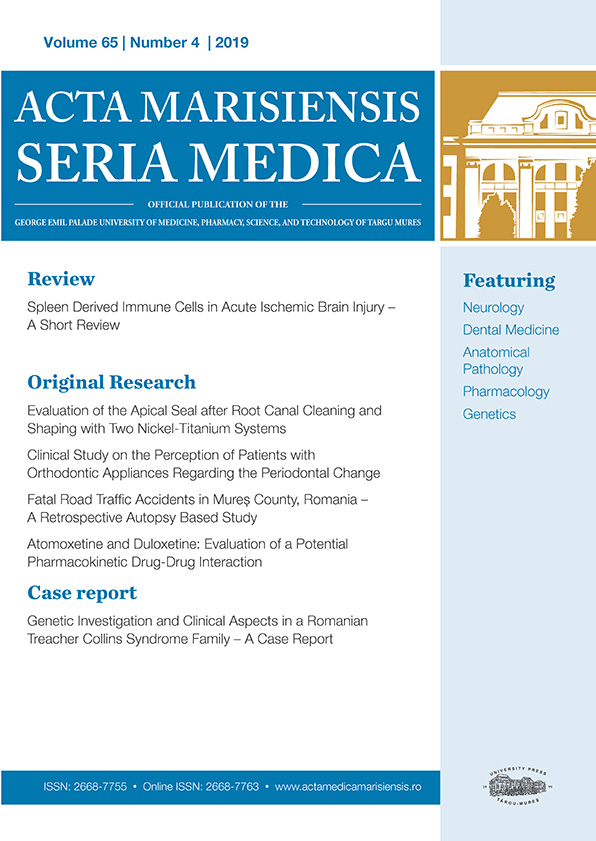Predictors of anemia without active bleeding signs in patients referred for endoscopy
Abstract
Objective: The objective of the present study is to clarify the value of clinic, endoscopic, and histologic variables that may predict anemia in patients performing esophagogastroduodenoscopy for gastrointestinal complaints in the absence of bleeding signs or lower digestive disease. Methods: This study included 654 patients referred for endoscopy that were divided based on biological parameters performed in the same day in the study group (306 patients diagnosed with anemia) and the control group (348 patients without anemia). Results: Anemia is frequent in elderly patients, especially in the presence of premalignant gastric lesions, and it is associated with multiple comorbidities. In two multivariate regression models antivitamin K oral anticoagulants were found to be independently associated with anemia (p = 0.01), but not with antiplatelet therapy, or with non-antivitamin K anticoagulants. Multiple regression models support that epigastric pain and heartburn are inversely associated with anemia, while weight loss remained an independent predictor for simultaneous anemia and premalignant lesions. Non-infectious chronic gastritis (p<0.001) is an independent predictor for anemia and premalignant gastric lesions, increasing the odds of anemia by 2.2 times, while reactive gastropathy is inversely associated. Gastric erosions and ulcer remained independent predictors for concomitant anemia and premalignant lesions. Conclusions: Chronic inactive gastritis and premalignant gastric histologic lesions are predictors for anemia in endoscopic population, while active H. pylori infection is not. Dyspeptic symptoms, epigastric pain (p<0.001,OR 0.2-0.5) and heartburn (p<0.001,OR 0.07-0.3) are inversely associated with anemia alone or associated with premalignant gastric lesions.
Copyright (c) 2023 Sabrina Nicoleta Munteanu, Andreea Raluca Cozac-Szőke, Simona Mocan, Tania Mihaela Zait, Răzvan Iacob Rus, Răzvan Emil Petri, Anca Negovan

This work is licensed under a Creative Commons Attribution 4.0 International License.









